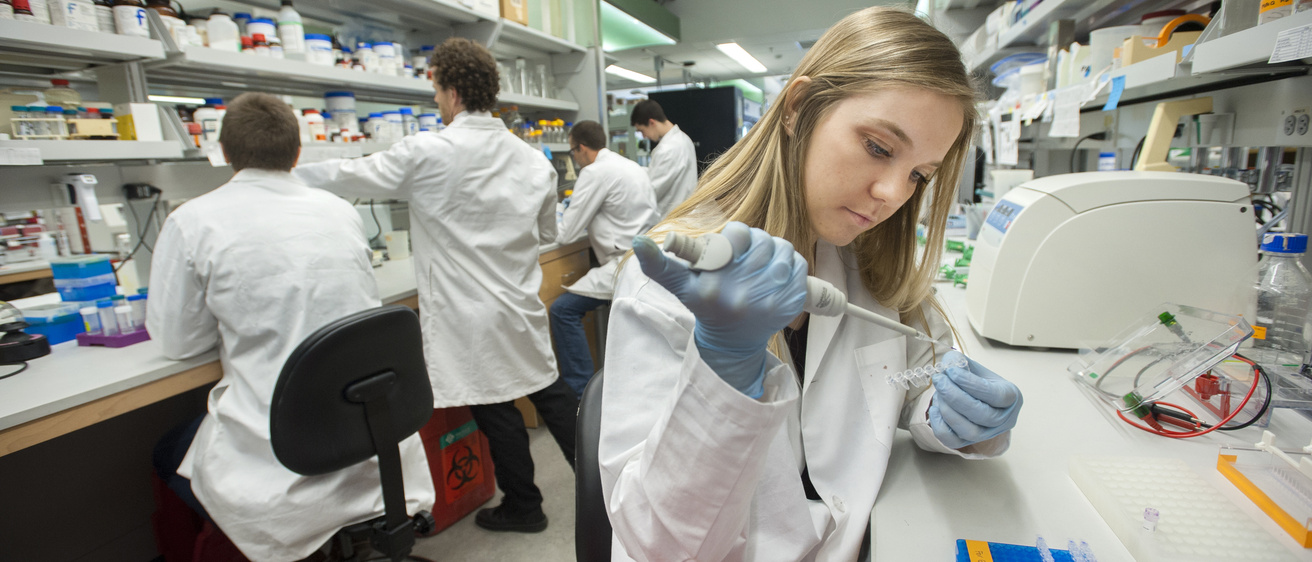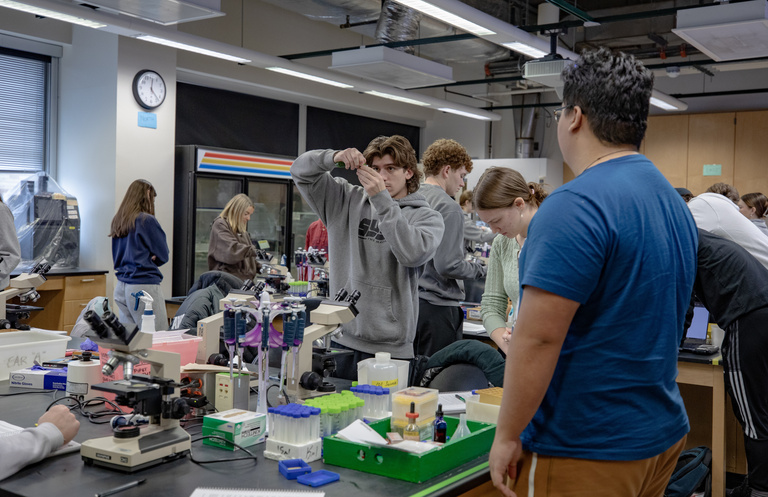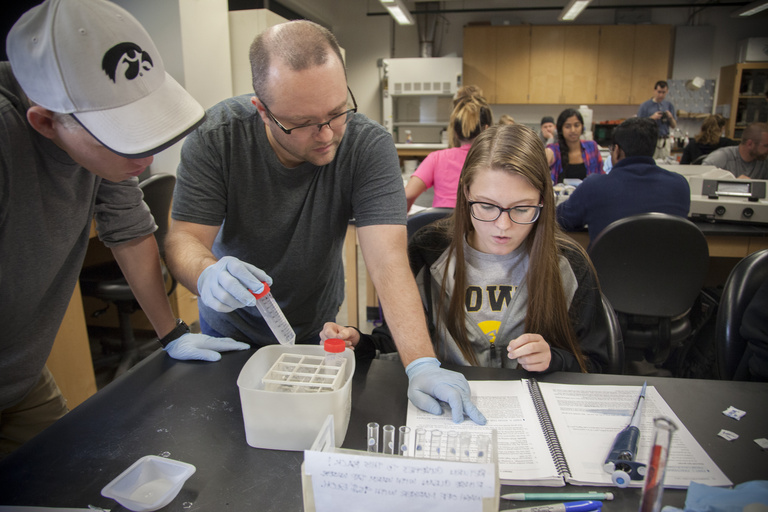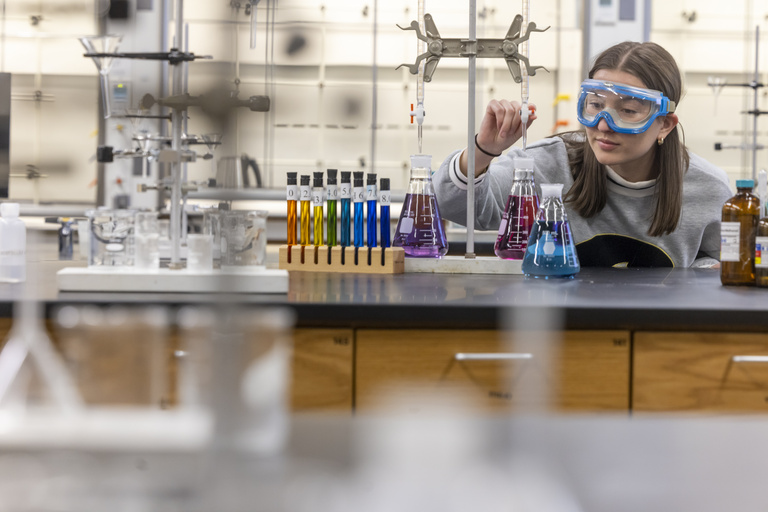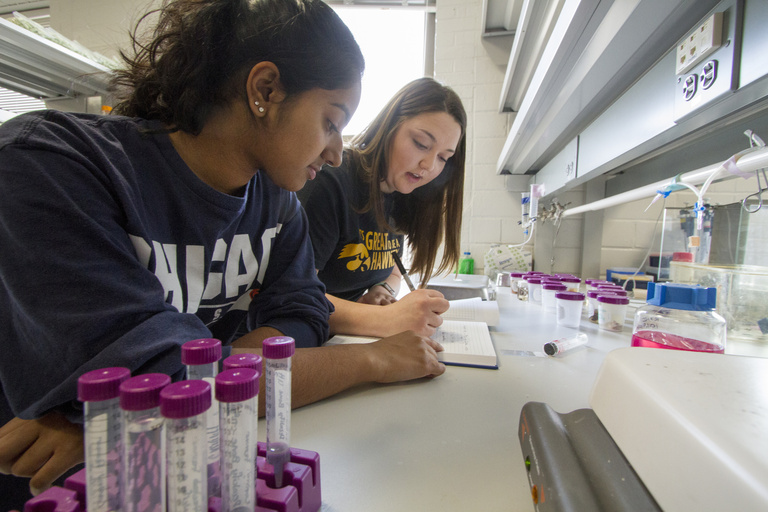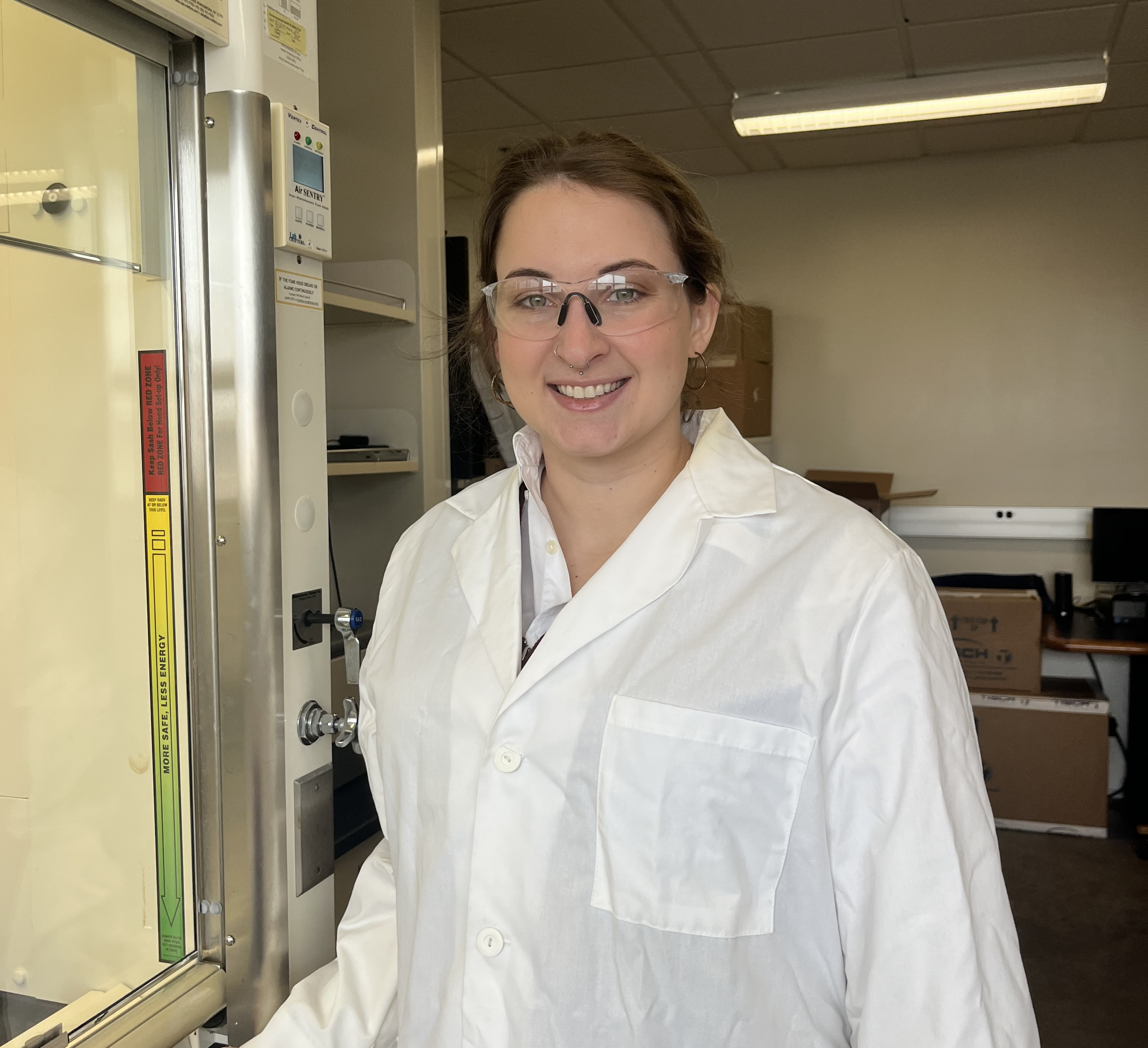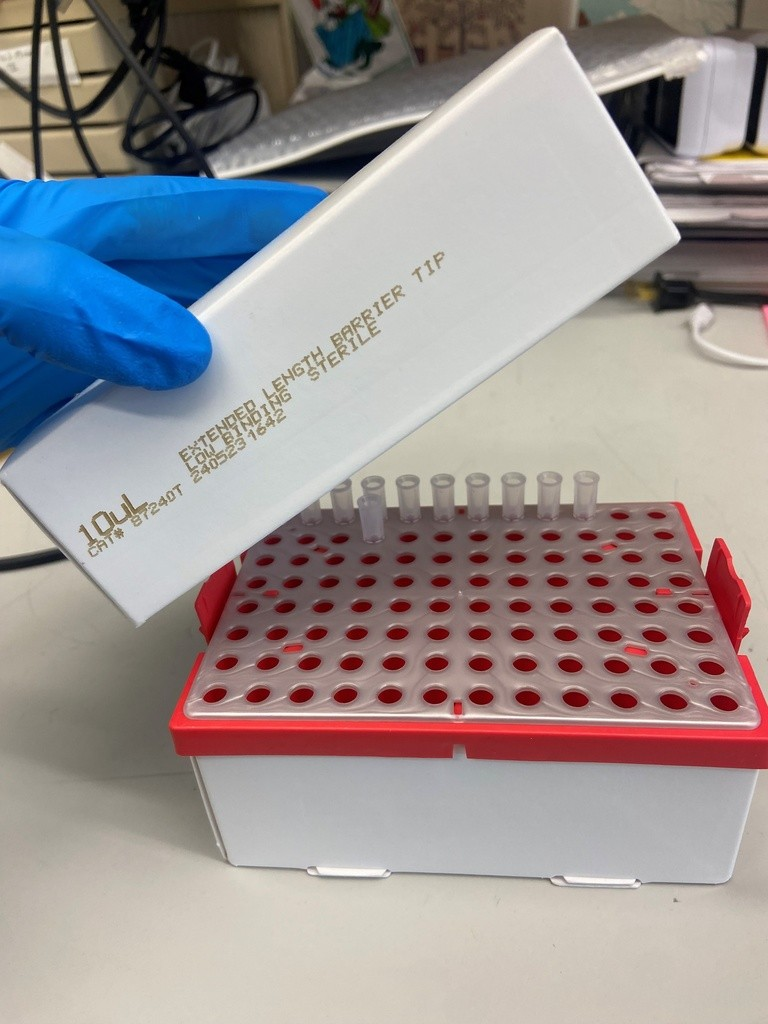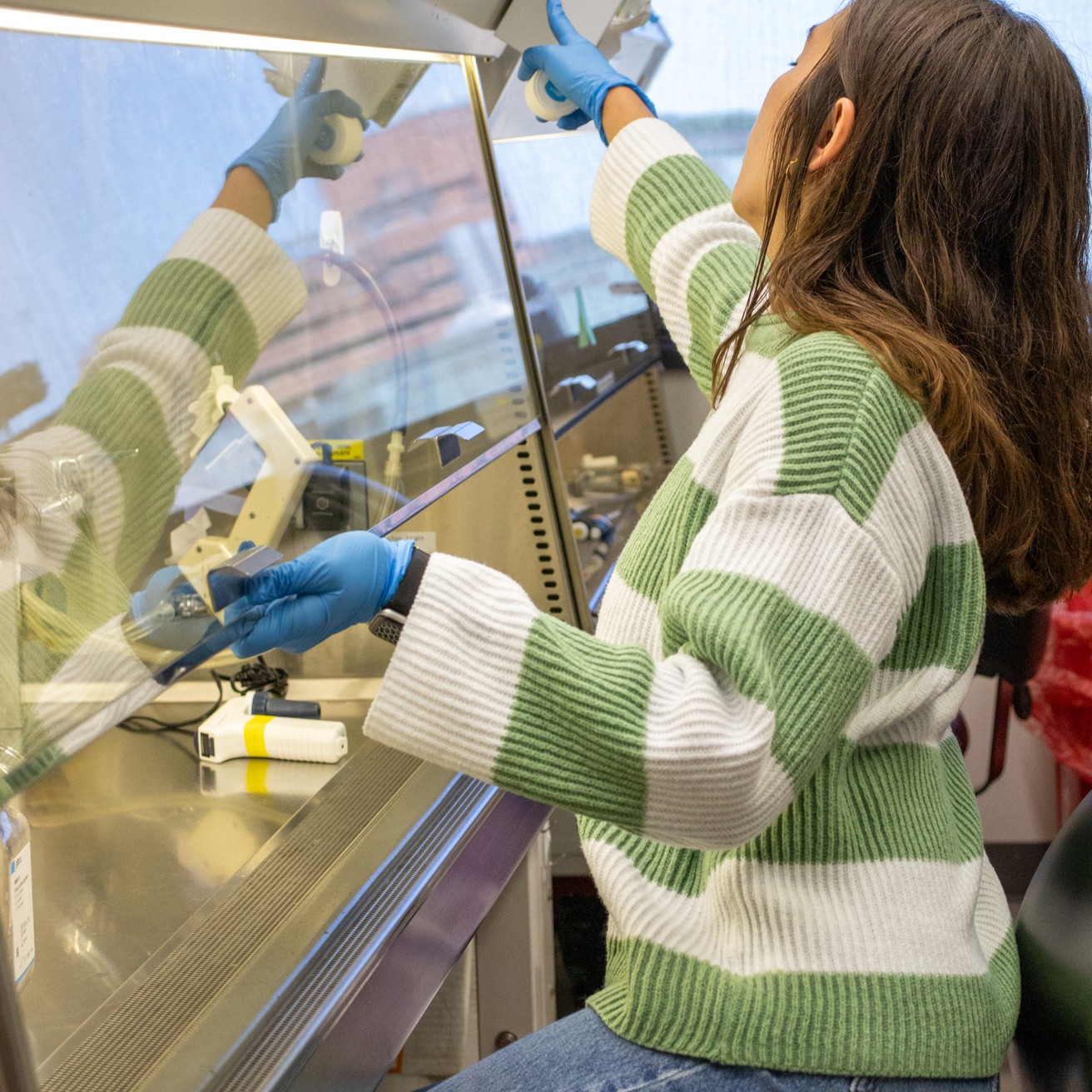Did you know that research laboratories on a university campus can be responsible for over 60% of the university's energy and water use [1]? Increasing sustainable efforts in our campus laboratories can have a meaningful impact on our environment. Read more about current efforts taking place at the University of Iowa as well as other effective initiatives below.
Easy, Impactful Actions
Turn UTL Freezers up to -70° C
Shut the Sash of fume hoods
purchase cardboard pipette tip boxes
Shut the Sash
"Fume hoods are a crucial part of laboratory work but require large amounts of energy to run with supply and exhaust fans constantly running. On average, the energy used by a single fume hood is equivalent to that of approximately 3 US homes. By simply lowering the 'sash' (the movable window allowing access to the fume hood), however, the air flow is reduced and the energy needed decreases.
With this decrease in energy comes reduced costs and greenhouse gas emissions as well as an increase in safety. A Harvard University study found that reducing how often and how much the sash is open can save approximately $200,000 - $250,000 per year and cut greenhouse emissions by as much as 200-250 metric tons of carbon dioxide equivalent.1 Shutting the sash also lowers the likelihood that fumes escape and are inhaled by researchers or students.
With several hundred fume hoods on the University of Iowa’s campus, the Shut the Sash campaign looks to drastically reduce the energy we consume on campus and bring us another step closer to a safer, more sustainable future."
As part of this campaign, stickers are being placed on fume hood doors to remind users to lower the sash with the simple words "More Safe, Less Energy."
-Read more about Shut the Sash in Will Tjeltveit's article here.
Biomedical Sustainability Initiative
The Biomedical Sustainability Initiative is a perfect example of our University of Iowa scientists, clinicians, and students improving sustainable efforts in campus laboratories. This group has implemented specific changes when it comes to their labs managing waste, decreasing power usage, and promoting efficiency. Read more about their sustainable actions below and consider implementing them in your lab!
Manage Waste
- Recycling in Labs: Sign this petition to call for the University of Iowa to start recycling #5 plastics!
Plastic: Most plastic products are embossed with a three-arrow recycling symbol containing a specific number in the middle. As long as the plastic did not house infectious material, any ♳ & ♴ plastic can be recycled through the university's main recycling stream ("#1 and #2 in the blue!").
Metal: Metal is extremely energy intensive to produce. Consider rinsing and recycling aluminum foil, cans, etc.
Paper: Paper is nearly universally recyclable (unless it is composite with plastic film). Help save trees and reduce energy by recycling all paper products and using 100% recycled paper.
Purchasing in Labs: Consider purchasing rackless conical tubes and/or pipette tip boxes made of cardboard to save money and reduce waste.

- Reuse and Recycle Packaging:
- Corning (along with subsidiaries Falcon and Axygen) launched a mail back program for plastic packaging materials. Shipping is pre-paid, all you have to do is collect the materials and ship back.
- Kimberly Clark's RightCycle program offers to recycle uncontaminated and lightly contaminated nitrile gloves at no cost to the consumer (gloves must be KC brand).
- Millipore Sigma will take return polystyrene coolers for reuse, all you need to do is tape it up and send it back (pre-paid return shipping).
Visit their Waste Management page to learn more.
Decrease Power Usage
- Equipment Use: Some equipment, such as cold-storage equipment, needs to run continuously for a laboratory to function. This isn't the case for most equipment, though. Turn off equipment when not in use, such as shakers, and keep lids and doors of water baths, autoclaves, incubators, tissue culture hoods, and freezers closed whenever possible. Less air/temperature exchange with environmental air means that equipment won't have to work nearly as hard, saving energy and your valuable equipment.
- Invest in Energy-Efficient Equipment: Energy efficiency not only is better for the environment, but can save a lot of money over time, even if you pay more out of pocket. For example, Mayo Clinic is projected to save $6 million over 10 years by purchasing the most efficient, rather than the cheapest ULT models.
- Set Ultra-Low Temp. Freezers to -70: see the Freezer Impacts section below or read about the Freezer Challenge here.
Visit their Power Consumption page for more information.
Promote Efficiency
- Consolidate Equipment; Coordinate w/ Nearby Labs: CU Boulder has saved >$3 million in avoided equipment purchases over the past 5 years by forming a Shared Instrumentation Program. By consolidating resources, researchers can avoid purchasing unnecessary equipment, allowing grant money to go further. This also reduces carbon emissions from material production, assembly, and transport. Do nearby labs have equipment that you may need to borrow? Email collaborators to save money. Iowa's CORE facilities can train users on new equipment and provide a broad range of available technologies!
- Embrace Technology to Improve Efficiency:
- Coordination between labs can be difficult, but software such as Quartzy can help. Tracking expiration dates, storage conditions/locations, and departmental usage saves money on redundant purchases, averts double orders (and disposal), and minimizes shipment downtime.
- Free software, SoftMouse, helps track animal number, parentage and caging thereby reducing unnecessary husbandry costs. Its automatic colony management features make it easier to parse than Excel.
- WattIQ tracks energy usage of equipment over time facilitating practices to reduce energy consumption.
Read more at their Laboratory Efficiency page.
Save Water
Potential Ways to Conserve Water in Your Lab:
- Increase awareness of and promote conscious behavior towards autoclaves and glass-washers
- Install aerators on tap faucets
- Avoid single-pass cooling
- Only use deionized water when necessary
- Retrofit or replace old equipment
Learn more about these tips at their Water Conservation page.
Support Companies with Commitments to Sustainability
Companies such as Corning, New England Biolabs, Promega, Energy Star, Millipore Sigma, and Kimberly-Clark Professional have commitments to sustainability.
For more complex products, the ACT (Accountability, Consistency, and Transparency) eco-label is My Green Lab's certified nutrition-style label. This describes the environmental impact of consumables such as chemicals and equipment. It is third-party verified, so you can be confident in products' transparency and impact. Buying products with the ACT label helps drive more companies towards sustainable practices.
For a comprehensive, creative list of reagent/supply substitutions and ideas, click here.
~50% of carbon emissions
[2]
Freezer Impacts
Did you know that increasing freezer temperatures in labs from -80 degrees Celsius to -70 degrees Celsius can in turn reduce energy consumption by approximately 20%? Institutions such as University of Colorado–Boulder, University of California–Davis, University of Alabama–Birmingham, and Harvard University have implemented measures to keep freezers at -70 degrees Celsius or higher. Some organizations started this initiative over ten years ago—imagine the energy they have saved! View specific data on freezer temperatures gathered from these institutions at this link or read more about their experiences here.
Find more information about My Green Lab's Freezer Challenge or get involved here.
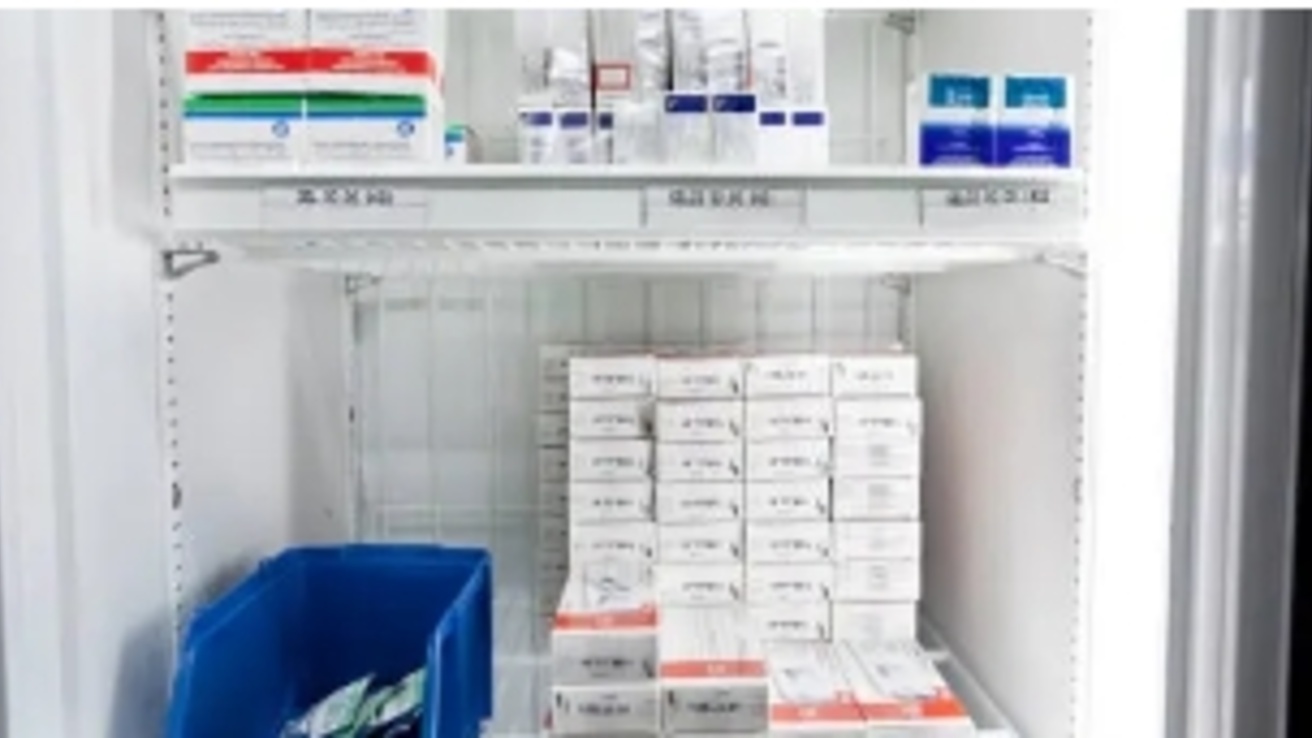
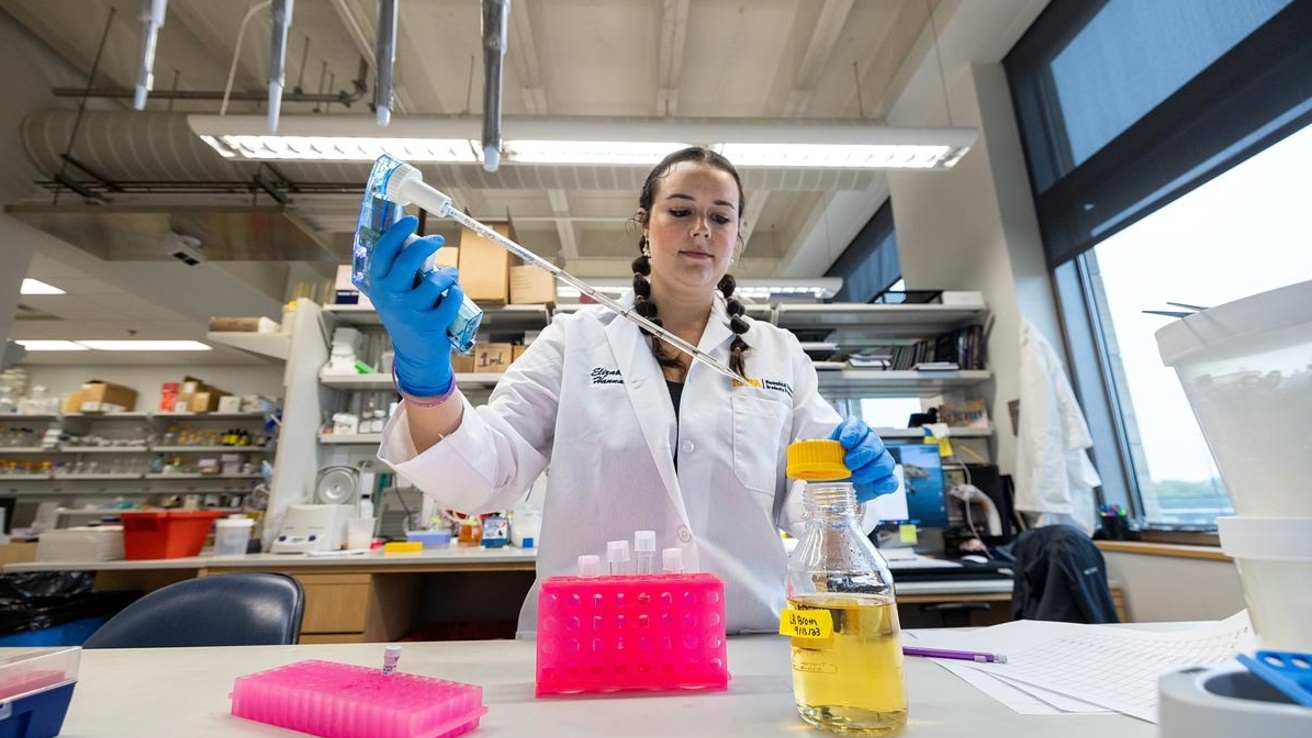
My Green Lab
My Green Lab is a nonprofit that partners with research organizations (including academic institutions) and scientists to help with resource utilization, improving the environment and sustainability efforts in the process. They have multiple different programs, each with their own specific initiatives, including Freezer Challenge, ACT Ecolabel, and their My Green Lab Certification.
Polycarbin
Polycarbin is a recycling program dedicated to keeping “as many single-use consumables from landfills and incinerators as possible” with the goal to “redirect those resources back into the production of low carbon consumables.” Many programs on the University of Iowa campus have been involved in testing a pilot program with Polycarbin on campus, including Neiman Lab, the Lung Biology and Cystic Fibrosis Research Center, and the lab managed by Danielle Zwiefelhofer. Read more about the Polycarbin initiative here.
Environmental Health and Safety
EHS offers services for Biological, Chemical, Occupational, and Radiation safety as well as select Environmental programs “intended to promote health and safety, regulatory compliance, and environmental management.” Find out more about their services here or click the buttons below.
Lab Stores on Campus
Chemistry Stores: Located at W1 in the Chemistry Building, the chemistry stores offer a self-service storeroom of over 400 items available for University of Iowa personnel, students, and campus partners with a valid MFK. View the chemistry store inventory here.
Biochemistry Store: Located at 4-321 in the Bowen Science Building, the biochemistry store offers supplies for sale for UI-funded facilities. Using the biochemistry store can help you save on costs and time, minimize shipping charges, and more. View the biochemistry store inventory here.
References
- Woolston, C. (2024, September 25). The Trials and Triumphs of Sustainable Science. Nature News. https://www.nature.com/articles/d41586-024-03009-w
- De Paepe, M., Jeanneau, L., Mariette, J., Aumont, O., & Estevez-Torres, A. (2023). Purchases dominate the carbon footprint of Research Laboratories. Public Library of Science. https://doi.org/10.1101/2023.04.04.535626
